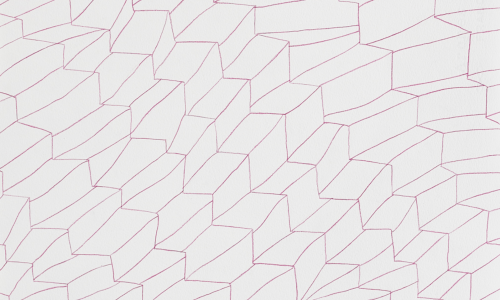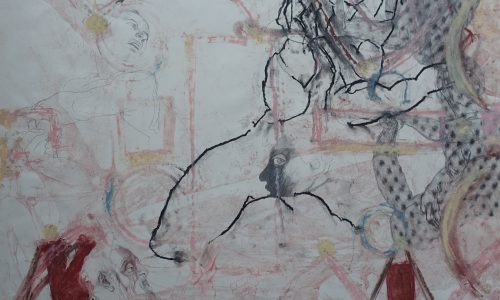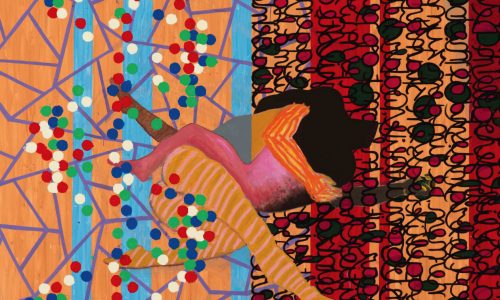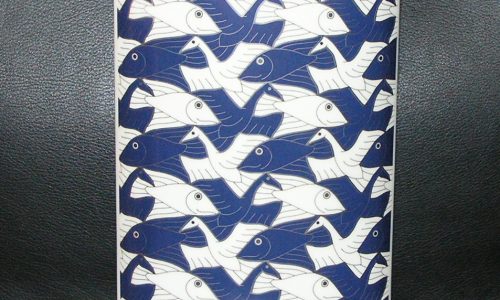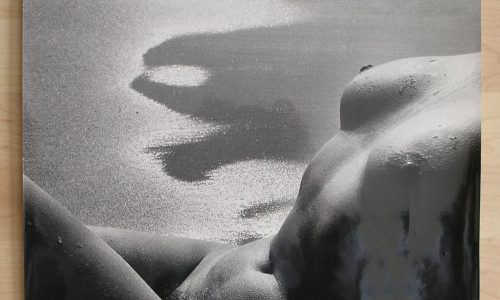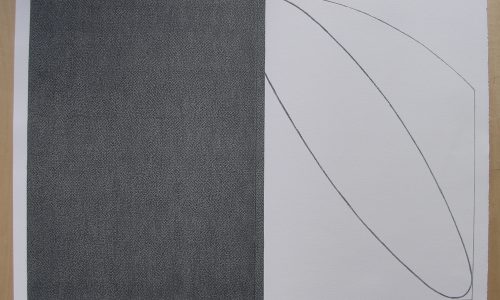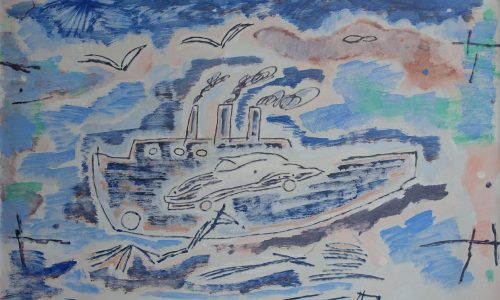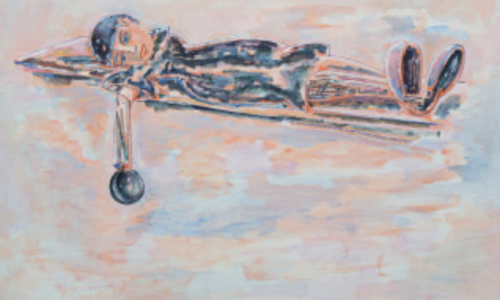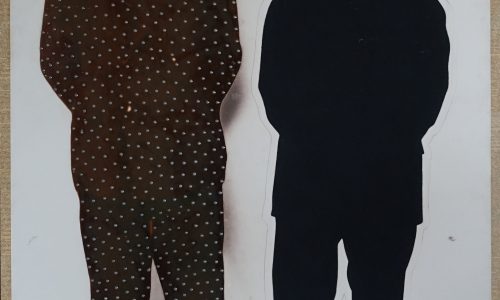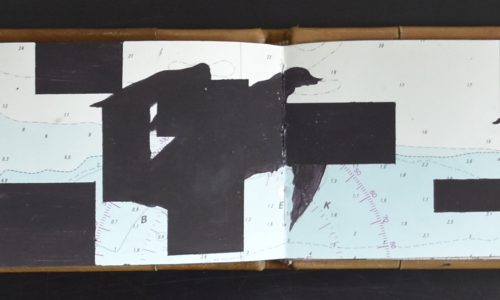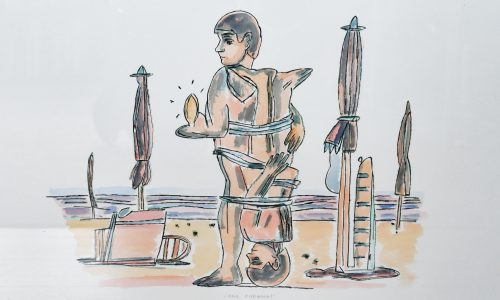
Because of a recent find of the 1972 Boymans van Beuningen catalogue (available at www.ftn-books.com) i was reminded that i never published anything on George Segal. Segal is present in some of the most important dutch collections but after some exhibitions in the Seventies his works were rarely on show in the Netherlands.
There is an excellent biography on Segal to be found on the Art Story of which i publish the text here:

OLYMPUS DIGITAL CAMERA

OLYMPUS DIGITAL CAMERA

OLYMPUS DIGITAL CAMERA
George Segal was born in New York City on November 26, 1924 to Jewish immigrants from Poland. His father, who had come to America in 1922, would lose all his brothers at the hands of the Nazis. Segal’s parents ran a kosher butcher shop in the Bronx, working long hours, and dreamt of a more prosperous life for their son.
While attending public school, Segal developed a passion for art. His art teacher nurtured his love of drawing, giving him art supplies and encouraging him to explore the Metropolitan Museum of Art. Segal’s high science and math scores earned him admission to Stuyvesant, one of the city’s top public high schools. His parents, who had moved to New Jersey to run a chicken farm, hoped he would become a doctor or a scientist. Much to their dismay, Segal remained focused on art, living with his aunt in Brooklyn while finishing high school and spending weekends working on the chicken farm.
After graduating from high school in 1941, Segal sporadically attended a number of art schools. Due to the outbreak of World War II, his parents needed a hand on the chicken farm, which interrupted his course of study. Nonetheless, he continued to pursue his ambition to be an artist, taking courses when he could at New York’s Cooper Union, Rutgers University in New Jersey (where he attended night courses), and the Pratt Institute of Design in New York. In 1949 he finally graduated with a Bachelor of Arts in art education from New York University. He would later return to Rutgers University to pursue a Master of Fine Arts which he received in 1963.
Early Training
In 1946, Segal married Helen Steinberg, a girl who lived on a neighboring farm and who he first met in his teens. They bought land across the road from his father and continued in the family business of chicken farming. His pursuit of a career in art was due in part to her unwavering support, and when the threat of bankruptcy loomed in 1957, Segal used his art education degree to get a teaching job at a New Jersey high school. There, he taught art until he was able to support himself and his family solely on his income as an artist.
Throughout his early years of struggle, Segal never wavered from his pursuit of making art and showed an early interest in painting. He and his fellow New York artist friends couldn’t help but be influenced by the large-scale, color-filled paintings of the Abstract Expressionist movement that was sweeping through the New York art scene. Despite this, Segal and others in his circle were not inspired to create such works, choosing rather to create works depicting images from the real world. Many derived their inspiration from elements of popular culture and consumer images as seen in the world of advertisements, the media, and comic books; while Segal focused more on the human figure performing acts of daily life such as waiting at a station or talking on the telephone. During the 1950s Segal began to receive attention for his paintings and in 1956 he had his first solo show at the Hansa Gallery, an artist cooperative, in New York.
Mature Period
In 1961, while teaching an art class for adults, Segal discovered the substance that would become his primary medium. The husband of one of his students worked for Johnson & Johnson and asked Segal to test a new plaster bandage material and write a text about how the material could be used in art projects for children. Segal experimented with plaster, bandages, and water, manipulating and drying it into the shapes of various objects. To his excitement, Segal realized this included making casts of parts of his own body after letting the material set for only a few minutes. Inspired, Segal took the plaster casts of various parts of his body and recreated them into the form of a seated figure, incorporating objects including a table and chair to complete the work. The work, Man Sitting at a Table (1961), became the first of his plaster sculptures.
While Segal created these sculptures throughout the rest of his career, he continually experimented with different ways they could be made and refined. Moving from casts of his own body, he also used other people including his wife, friends, and eventually his daughter Rena as his models. Segal also explored the effect of adding color by painting the white plaster casts various colors and also painted some sculptures black, such as Woman Sitting on a Bed (1993) which allowed him to focus on the impact of light in a new way. Segal explored the effect of casting his sculptures in bronze and then painting the works white and also made works using only body fragments rather than depictions of the full human figure.
These plaster sculptures, which primarily depicted scenes from everyday life such as figures sitting at a diner and waiting in a station, helped to make Segal one of the leading artists of the Pop art movement. While often the subjects were engaged in some of the less exciting albeit often necessary functions of daily life, Segal also drew inspiration from popular culture. The beloved American pastime of going to the movies was referenced in his sculpture Cinema (1963) – a life-sized plaster cast figure in the act of changing a movie title on the cinema’s marquee. Hollywood factored again in his sculpture The Movie Poster (1967) which featured a plaster cast man staring at a black and white photograph of iconic film star Marilyn Monroe.
In addition to his sculptural works, Segal continued to work in a variety of other media including paint, pencil, pen and ink, and pastels. The works created included numerous themes such as close-up studies of body parts, still lifes, and portraits.
His ability to so vividly capture human figures made him a good choice to create outdoor public sculptures. This type of sculpture was becoming increasingly popular in the United States and Segal contributed works such as his sculpture The Restaurant (1976), which was placed at the Federal Office Building in Buffalo, New York. Also, he was offered the commission to create pieces commemorating important world events such as a memorial to the victims of the Holocaust and tributes to American leaders including United States President Franklin Delano Roosevelt.
Throughout his career, Segal saw exhibitions and retrospectives of his work travel through the United States and other parts of the world including an exhibition that began in Switzerland in 1971 and subsequently toured Europe; a traveling retrospective at the Walker Art Center in Minneapolis, Minnesota in 1978; a retrospective of his work in Japan in 1982; and a 1997 retrospective at the Montreal Museum of Fine Arts.
Late Period
Segal showed a renewed interest in photography later in his life. He used the photographs of people and city scenes in both New Jersey and New York as basis for some of his later sculptures and as the starting point for drawings. One of his final series, Nightscapes, began with photographs the artist took of the night lights on the US 1 highway. After returning to his studio, Segal enlarged a photograph onto plywood, painted the scene, and after cutting out holes in the plywood, placed real light bulbs where the lights were in the photograph, creating a three-dimensional recreation of his photographic captures of the highway at night. Segal remained active as an artist until his death on June 9, 2000 in South Brunswick, New Jersey.
Like this:
Like Loading...







































